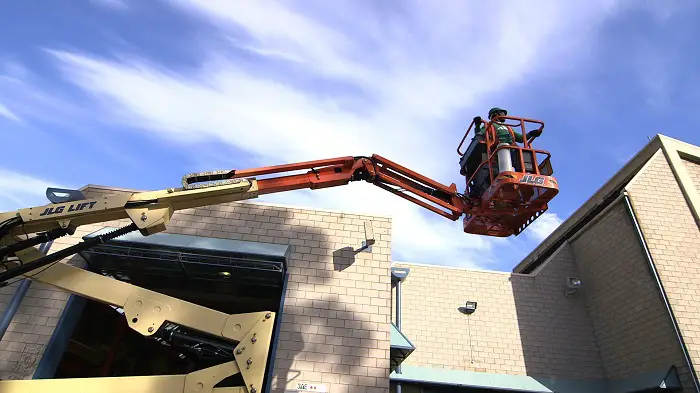Most of the construction site accidents have to do with lack of safety leading to falling from heights. As such, it is important to know how to keep safe while working at heights.
First, according to Justin Kissinger of Hy-Brid Lifts from the US, it is important to know your working height. “Know how high you need to work as most people use an oversized lift for the job. The correct size lift will be safer and more productive,” he asserts.
Hy-Brid Lifts are a complete range of manual and self-propelled lifts with working heights up to 20ft. Their scissor lifts are designed to be lightweight yet rental tough, provide operators higher lifting capacities, and provide superior maneuverability. Contractors and maintenance technicians can use them from start to finish for a wide range of applications in industries as diverse as construction, drywall, electrical, HVAC, industrial manufacturing, painting and plumbing.
The following are other factors an operator should keep in mind in order to be safe while working at heights:
Visual inspection
Before using the aerial work platform, the operator should visually inspect the equipment. First he must check hydraulic tank, hoses and cables. User must have these third party inspection and confirmation reports on suitability of platforms to safety and work conditions,updated regularly according to machine producer company.
Also read: 5 safety tips for your facility’s construction project
Daily controls
Before every operation, you should control trucks’ wheels, headlights and brake system . Ensure the emergency systems and controller levers are operational both visually and by means of hand. Safety warning plates and stickers on Machinery must be legible. The platform ID Plate which enables the tracking of platform by producer must also exist on machine.
Functional controls
Ensure balance outriggers are open and safety sensors and warning lamps controlled to check if they are correctly working. From the turret control station, check the platform functions. Before testing basket control station it is advisable to try emergency control and platform controller functions.
There is another important control for higher platforms. Higher platforms must include Moment Control and Area Control system and/or wind speed control system to enable platform to stay in safe working range. These functions are supplied by load sensors, angle & length sensors. These sensors must functionally tested and if there is screen , there must be a warning on the screen, also audio signal output must be observed.
Inspection on additional properties
Your equipment may include additional properties related to your demands. These could include hydraulic oil cooler, operator cabin heater, moveable operator cabin, extendable basket, basket-turret intercom systems, Electric sockets on turret and baskets, Radio remote controller…etc. Depending on properties included on your product, you should do prior inspections before use of equipment.

I really appreciate your suggestions on ensuring safety while working at heights, Nita. It makes a lot of sense to inspect your equipment visually and functionally before you start working as you suggest. I would imagine that it’d be especially beneficial to hire professionals to inspect your equipment to make sure that it is completely safe to use.
Thank you for those tips you’ve shared. Working at height can be dangerous if safety precautions are not taken. Being equipped with height safety training Mackay, help workers to be aware of the possible accidents that may occur while working.